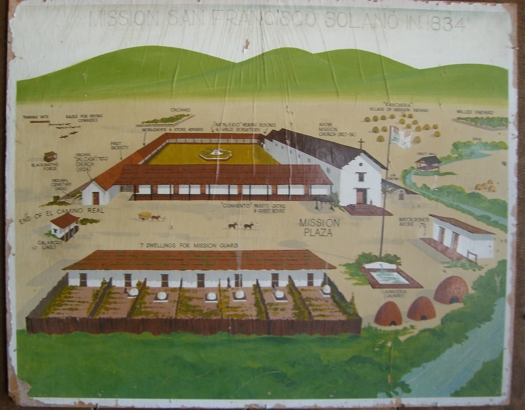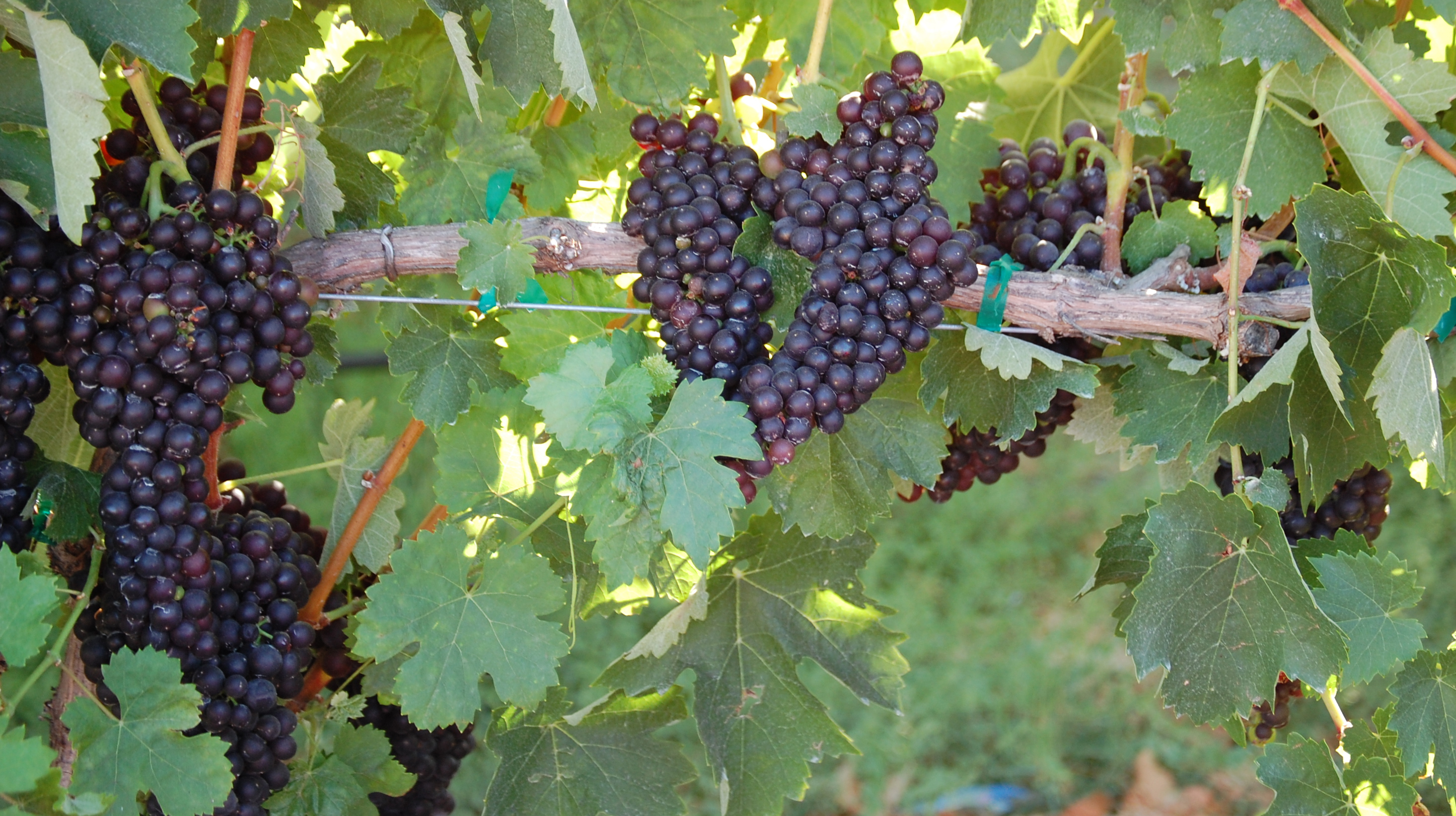|
Sonoma, CA
Sonoma is a city in Sonoma County, California, United States, located in the North Bay region of the San Francisco Bay Area. Sonoma is one of the principal cities of California's Wine Country and the center of the Sonoma Valley AVA. Sonoma's population was 10,739 as of the 2020 census, while the Sonoma urban area had a population of 32,679. Sonoma is a popular tourist destination, owing to its Californian wineries, noted events like the Sonoma International Film Festival, and its historic center. Sonoma's origins date to 1823, when José Altimira established Mission San Francisco Solano, under the direction of Governor Luis Antonio Argüello. Following the Mexican secularization of the missions, famed Californio statesman Mariano G. Vallejo founded Sonoma on the former mission's lands in 1835. Sonoma served as the base of General Vallejo's operations until the Bear Flag Revolt in 1846, when American filibusters overthrew the local Mexican government and declared the Califor ... [...More Info...] [...Related Items...] OR: [Wikipedia] [Google] [Baidu] |
List Of Municipalities In California
California is a U.S. state, state located in the Western United States. It is the List of U.S. states and territories by population, most populous state and the List of U.S. states and territories by area, third largest by area after Alaska and Texas. According to the 2020 United States Census, California has 39,538,223 inhabitants and of land. California has been inhabited by numerous Indigenous peoples of California, Native American peoples since antiquity. The Spanish colonization of the Americas, Spanish, the Russian colonization of the Americas, Russians, and other Europeans began exploring and colonizing the area in the 16th and 17th centuries, with the Spanish establishing its first California Spanish missions in California, mission at what is now Presidio of San Diego, San Diego in 1769. After the Mexican Cession of 1848, the California Gold Rush brought worldwide attention to the area. The growth of the Cinema of the United States, movie industry in Los Angeles, high te ... [...More Info...] [...Related Items...] OR: [Wikipedia] [Google] [Baidu] |
Luis Antonio Argüello
Luis Antonio Argüello (; June 21, 1784 – March 27, 1830) was the first Californio (native-born) governor of Alta California, and the first to take office under Mexican rule. He was the only governor to serve under the First Mexican Empire (of 1821–1823) and also served as acting governor under the subsequent provisional government, which preceded the First Mexican Republic (of 1824–1835). Biography Argüello was born at Presidio of San Francisco (in present day San Francisco), Alta California, to José Darío Argüello and Maria Ygnacia Moraga, members of one of the most distinguished and influential families in early California history. His father founded the Pueblo de Los Angeles, and served as Governor of Alta California and later of Baja California. In August, 1806, Argüello succeeded his father as Commandant of California with the rank of lieutenant. In 1821, he launched an exploration of Northern California to investigate the rumors of "Foreigners" setting up ... [...More Info...] [...Related Items...] OR: [Wikipedia] [Google] [Baidu] |
Mission San Francisco Solano
Mission San Francisco Solano was the 21st, last, and northernmost mission in Alta California. It was named for Saint Francis Solanus. It was the only mission built in Alta California after Mexico gained independence from Spain. The difficulty of its beginning demonstrates the confusion resulting from that change in governance. The California Governor wanted a robust Mexican presence north of the San Francisco Bay to keep the Russians who had established Fort Ross on the Pacific coast from moving further inland. A young Franciscan friar from Mission San Francisco de Asis wanted to move to a location with a better climate and access to a larger number of potential converts. The Mission was successful, given its short eleven year life, but was smaller in number of converts and with lower productivity and diversity of industries than the older California missions. The mission building is now part of the Sonoma State Historic Park and is located in the city of Sonoma, California. ... [...More Info...] [...Related Items...] OR: [Wikipedia] [Google] [Baidu] |
Sonoma International Film Festival
Sonoma International Film Festival (SIFF) is a 501 (c)(3) non-profit arts organization dedicated to promoting the best in independent film and filmmakers from around the world, inspiring savvy film lovers and introducing the power of film to student filmmakers. Mission Statement The Sonoma International Film Festival provides a welcoming, entertaining, and inspiring cinematic experience that supports and promotes independent films and celebrates the cultural diversity in the Sonoma Valley through the art of film. The Sonoma International Film Festival is a non-profit 501 (c)(3). Tax ID 68-0428999. About SIFF Named “One of the 25 Coolest Festivals” by MovieMaker Magazine and one of “America’s Top Ten Destination Film Festivals” by USA Today, the five-day film festival takes place every March screening an estimated 120 films from 200 filmmakers representing 40 countries. An estimated 7,500 live attendees and 30,000 virtual viewers, makes SIFF one of the largest arts ... [...More Info...] [...Related Items...] OR: [Wikipedia] [Google] [Baidu] |
California Wine
California wine production has a rich viticulture history since 1680 when Spanish Jesuit missionaries planted ''Vitis vinifera'' vines native to the Mediterranean region in their established missions to produce wine for religious services. In the 1770s, Spanish missionaries continued the practice under the direction of the Father Junípero Serra who planted California's first vineyard at Mission San Juan Capistrano. Its contemporary wine production grew steadily since the end of Prohibition, but mostly known for its sweet, port-style and jug wine products. As the market favored French brands, California's table wine business grew modestly, Taber (2005), p40 but quickly gained international prominence at the Paris Wine Tasting of 1976, when renown French oenophiles, in a blind tasting, ranked the California wines higher than the primer French labels in the Chardonnay (white) and Cabernet Sauvignon (red) categories. Taber (2005), pp216–220 The result caused a ‘shoc ... [...More Info...] [...Related Items...] OR: [Wikipedia] [Google] [Baidu] |
Census
A census is the procedure of systematically acquiring, recording and calculating information about the members of a given population. This term is used mostly in connection with national population and housing censuses; other common censuses include censuses of agriculture, traditional culture, business, supplies, and traffic censuses. The United Nations (UN) defines the essential features of population and housing censuses as "individual enumeration, universality within a defined territory, simultaneity and defined periodicity", and recommends that population censuses be taken at least every ten years. UN recommendations also cover census topics to be collected, official definitions, classifications and other useful information to co-ordinate international practices. The UN's Food and Agriculture Organization (FAO), in turn, defines the census of agriculture as "a statistical operation for collecting, processing and disseminating data on the structure of agriculture, covering th ... [...More Info...] [...Related Items...] OR: [Wikipedia] [Google] [Baidu] |
Sonoma Valley AVA
The Sonoma Valley AVA is an American Viticultural Area in Sonoma County, California which centers on the Sonoma Valley in the southern portion of the county. The name 'Sonoma' means 'Valley of the Moon' in the local Native American dialect. The appellation is bordered by two mountain ranges: the Mayacamas Mountains to the east and the Sonoma Mountains to the west. History Sonoma Valley has played a significant role in the history of California wine. The first vineyards in the valley were planted by Franciscan friars at Mission San Francisco Solano in 1823. In 1857, Agoston Haraszthy established one of California's first successful commercial wineries here when he founded Buena Vista Winery. By 1920, there were 256 wineries in Sonoma Valley with more than planted to grape vines. Prohibition affected Sonoma Valley as hard as any other wine region in California, and most wineries were unable to continue operating. Recovery after the repeal of Prohibition in 1933 was slow, and onl ... [...More Info...] [...Related Items...] OR: [Wikipedia] [Google] [Baidu] |
Wine Country
Wine Country is the region of California, in the northern San Francisco Bay Area, known worldwide as a premier wine-growing region. The region is famed for its wineries, its cuisine, Michelin star restaurants, boutique hotels, luxury resorts, historic architecture, and culture. Viticulture and wine-making have been practiced in the region since the Spanish missionaries from Mission San Francisco Solano established the first vineyards in 1812. There are over 1700 wineries in the North Bay, (according to Alcoholic Beverage Control of California), mostly located in the area's valleys, including Napa Valley in Napa County, and the Sonoma Valley, Alexander Valley, Dry Creek Valley, Bennett Valley, and Russian River Valley in Sonoma County. Wine grapes are also grown at higher elevations, such as Atlas Peak and Mount Veeder AVAs. Cities and towns associated with the Wine Country include Santa Rosa, Healdsburg, Sonoma, Kenwood, Petaluma, Sebastopol, Guerneville, Windsor, G ... [...More Info...] [...Related Items...] OR: [Wikipedia] [Google] [Baidu] |
San Francisco Bay Area
The San Francisco Bay Area, often referred to as simply the Bay Area, is a populous region surrounding the San Francisco, San Pablo, and Suisun Bay estuaries in Northern California. The Bay Area is defined by the Association of Bay Area Governments to include the nine counties that border the aforementioned estuaries: Alameda, Contra Costa, Marin, Napa, San Mateo, Santa Clara, Solano, Sonoma, and San Francisco. Other definitions may be either smaller or larger, and may include neighboring counties that do not border the bay such as Santa Cruz and San Benito (more often included in the Central Coast regions); or San Joaquin, Merced, and Stanislaus (more often included in the Central Valley). The core cities of the Bay Area are San Francisco, San Jose, and Oakland. Home to approximately 7.76 million people, Northern California's nine-county Bay Area contains many cities, towns, airports, and associated regional, state, and national parks, connected by a comp ... [...More Info...] [...Related Items...] OR: [Wikipedia] [Google] [Baidu] |
North Bay (San Francisco Bay Area)
The North Bay is a subregion of the San Francisco Bay Area, in California, United States. The largest city is Santa Rosa, which is the fifth-largest city in the Bay Area. It is the location of the Napa and Sonoma wine regions, and is the least populous and least urbanized part of the Bay Area. It consists of Marin, Napa, Solano and Sonoma counties. Transportation The North Bay is connected to San Francisco by the Golden Gate Bridge and to the East Bay by the Richmond–San Rafael Bridge, Carquinez Bridge and the Benicia–Martinez Bridge. Several ferry routes operate between the North Bay and San Francisco, from terminals located in Angel Island, Larkspur, Sausalito, Tiburon and Vallejo. The Sonoma–Marin Area Rail TransitSMART, a commuter rail line from Larkspur to Cloverdale, was approved by voters in November 2008. Passenger service began between the Sonoma County Airport station and San Rafael in August 2017 and was completed as far south as Larkspur in 2019. Hist ... [...More Info...] [...Related Items...] OR: [Wikipedia] [Google] [Baidu] |
Geographic Names Information System
The Geographic Names Information System (GNIS) is a database of name and locative information about more than two million physical and cultural features throughout the United States and its territories, Antarctica, and the associated states of the Marshall Islands, Federated States of Micronesia, and Palau. It is a type of gazetteer. It was developed by the United States Geological Survey (USGS) in cooperation with the United States Board on Geographic Names (BGN) to promote the standardization of feature names. Data were collected in two phases. Although a third phase was considered, which would have handled name changes where local usages differed from maps, it was never begun. The database is part of a system that includes topographic map names and bibliographic references. The names of books and historic maps that confirm the feature or place name are cited. Variant names, alternatives to official federal names for a feature, are also recorded. Each feature receives a per ... [...More Info...] [...Related Items...] OR: [Wikipedia] [Google] [Baidu] |
.png)






.jpg)
